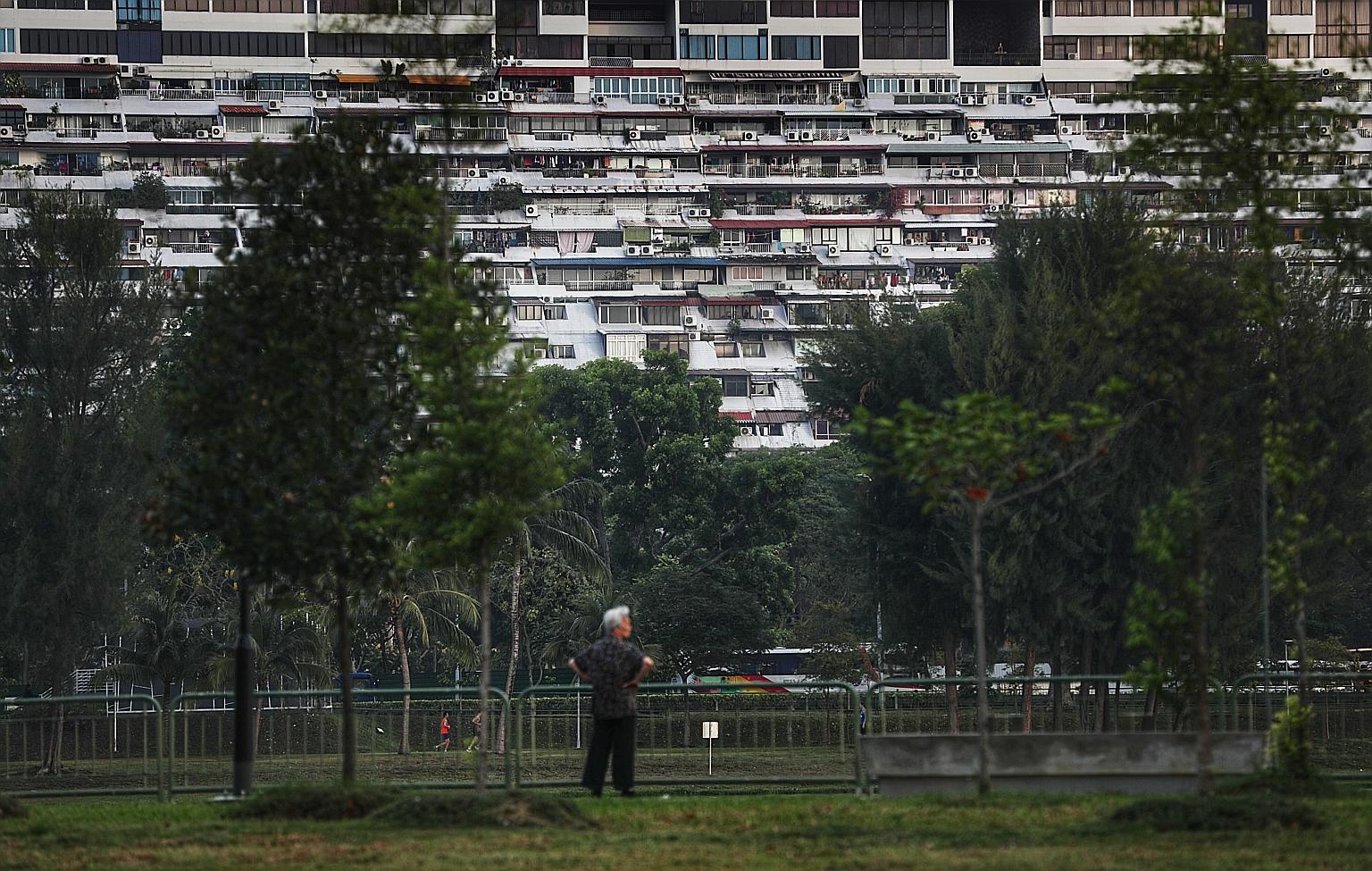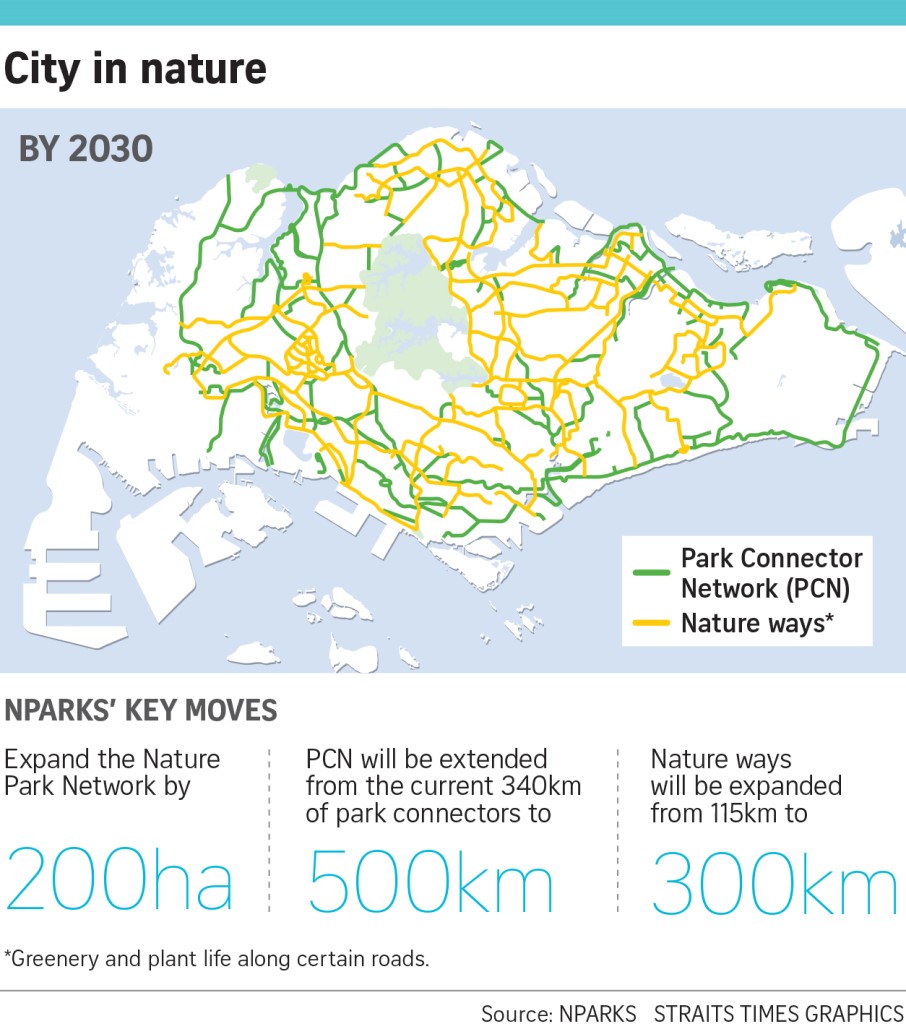Debate on ministries' budgets: National Development
S'pore's 2030 goal: More gardens, park connectors
Move to enhance Republic's natural capital to turn it into a city in nature, says minister
Sign up now: Get ST's newsletters delivered to your inbox

Tanjung Rhu Promenade Park Connector with Golden Mile Complex in the background. Nature lovers can expect 140ha of new gardens and parks in the next five years. Thirty therapeutic gardens designed for seniors and those with conditions such as attention deficit hyperactivity disorder and dementia will also be built by 2030.
ST PHOTO: KELVIN CHNG
Melissa Heng
Follow topic:
Singapore will transform into a greener city in the next 10 years, with more plant life and nature integrated into urbanised areas, in a move to transform it from a "city in a garden" to a "city in nature".
In announcing the new vision yesterday, Second Minister for National Development Desmond Lee said the project is strategic as it will enhance and extend Singapore's natural capital.
"(It will) provide Singaporeans with a better quality of life, while coexisting with our flora and fauna. Indeed, with climate change, more extreme weather conditions, increased urbanisation, we must do more," he told Parliament during the debate on his ministry's budget.
Work will be carried out by the National Parks Board (NParks) in four key steps, he added.
These are: extending the Nature Park Network, intensifying nature in gardens and parks, restoring nature into the built environment and strengthening connectivity between Singapore's green spaces.
The nature park network, which covers 350ha, will get an additional 200ha by 2030. These parks serve as buffers to protect nature reserves from the impact of urbanisation and human activities.
Singapore's four nature reserves - Bukit Timah, Central Catchment, Labrador and Sungei Buloh Wetland Reserve - protect primary and secondary rainforests and are core habitats for native biodiversity.
Mr Lee said: "Singaporeans can look forward to more places like Rifle Range Nature Park for nature-based recreation, such as hiking and bird watching."
For example, a 40ha nature park will be established in Khatib Bongsu, a rich mangrove and mudflat habitat on the north-eastern coast of Singapore.
Nature lovers can also expect 140ha of new gardens and parks in the next five years.
These parks will have more greenery with natural landscape designs and a wider variety of plants. Waterways and water bodies in parks will also be naturalised.

This had been done in Bishan-Ang Mo Kio Park and Lakeside Garden, where concrete canals were transformed into natural rivers that help shield against the rise in sea levels and flooding.
Thirty therapeutic gardens designed for seniors and those with conditions such as attention deficit hyperactivity disorder and dementia will also be built by 2030.
The new move will also see more greenery in urban areas.
Singapore now has 115km of nature ways, which are the forest-like structures and green corridors along the roads. They help to keep the streets cool and resilient to the effects of urbanisation.
NParks aims to have an additional 185km of nature ways by 2030.
There will also be more greenery in the industrial estates, with another 100,000 trees to be planted in Tuas Industrial Estate and Seletar Aerospace Park, among others.
Connectivity between Singapore's green spaces will be increased as well.
Singapore has 340km of park connectors islandwide and this will be increased to 500km by 2030.
By then, all households will be within a 10-minute walk from a park, said Mr Lee.
Singaporeans will be engaged to help achieve a greener city.
NParks will launch a One Million Trees movement in the next 10 years. About 100 people and more than 100 groups and organisations have pledged their support for this.
NParks also aims to grow its volunteer pool from the current 48,000 to 70,000 by 2030.
Said Mr Lee: "We want a whole new generation of Singaporeans to carry on this responsibility to keep planting and nurturing trees, for the benefit of future Singaporeans."

